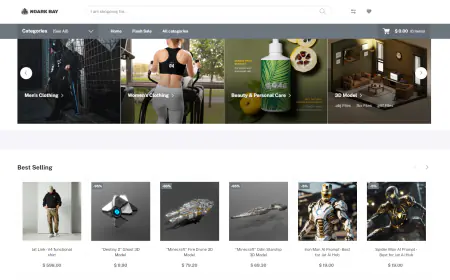Amazon Q Apps supports customization and governance of generative AI-powered apps
In this post, we examine how these features enhance the capabilities of Amazon Q Apps. We explore the new customization options, detailing how these advancements make Amazon Q Apps more accessible and applicable to a wider range of enterprise customers. We focus on key features such as custom labels, verified apps, private sharing, and data collection apps (preview).

We are excited to announce new features that allow creation of more powerful apps, while giving more governance control using Amazon Q Apps, a capability within Amazon Q Business that allows you to create generative AI-powered apps based on your organization’s data. These features enhance app customization options that let business users tailor solutions to their specific individual or organizational requirements. We have introduced new governance features for administrators to endorse user-created apps with app verification, and to organize app libraries with customizable label categories that reflect their organizations. App creators can now share apps privately and build data collection apps that can collate inputs across multiple users. These additions are designed to improve how companies use generative AI in their daily operations by focusing on admin controls and capabilities that unlock new use cases.
In this post, we examine how these features enhance the capabilities of Amazon Q Apps. We explore the new customization options, detailing how these advancements make Amazon Q Apps more accessible and applicable to a wider range of enterprise customers. We focus on key features such as custom labels, verified apps, private sharing, and data collection apps (preview).
Endorse quality apps and customize labels in the app library
To help with discoverability of published Amazon Q Apps and address questions about quality of user-created apps, we have launched verified apps. Verified apps are endorsed by admins, indicating they have undergone approval based on your company’s standards. Admins can endorse published Amazon Q Apps by updating their status from Default to Verified directly on the Amazon Q Business console. Admins can work closely with their business stakeholders to determine the criteria for verifying apps, based on their organization’s specific needs and policies. This admin-led labeling capability is a reactive approach to endorsing published apps, without gating the publishing process for app creators.
When users access the library, they will see a distinct blue checkmark icon on any apps that have been marked as Verified by admins (as shown in the following screenshot). Additionally, verified apps are automatically surfaced to the top of the app list within each category, making them easily discoverable. To learn more about verifying apps, refer to Understanding and managing Verified Amazon Q Apps.

The next feature we discuss is custom labels. Admins can create custom category labels for app users to organize and classify apps in the library to reflect their team functions or organizational structure. This feature enables admins to create and manage these labels on the Amazon Q Business console, and end-users can use them at app creation and to discover relevant apps in the library. Admins can update the category labels at any time to tailor towards specific business needs depending on their use cases. For example, admins that manage Amazon Q Business app environments for marketing organizations might add labels like Product Marketing, PR, Ads, or Sales solely for the users on the marketing team to use (see the following screenshot).

Users on the marketing team who create apps can use the custom labels to slot their app in the right category, which will help other users discover apps in the library based on their focus area (as shown in the following screenshot). To learn more about custom labels, see Custom labels for Amazon Q Apps.

Share your apps with select users
App creators can now use advanced sharing options to create more granular controls over apps and facilitate collaboration within their organizations. With private sharing, you have the option to share an app with select individuals or with all app users (which was previously possible). Sharing of any extent will still display the app in the library, but with private sharing, it will only be visible to app users with whom it has been shared. This means the library continues to be the place where users discover apps that they have access to. This feature unlocks the ability to enable apps only to the intended audience and helps reduce “noise” in the library from apps that aren’t necessarily relevant for all users. App creators have the ability to test updates before they are ready to publish changes, helping make sure app iterations and refinements aren’t shared before they are ready to widely publish the revised version.
To share an app with specific users, creators can add each user using their full email address (see the following screenshot). Users are only added after the email address match is found, making sure creators don’t unknowingly give access to someone who doesn’t have access to that Amazon Q Business app environment. To learn more about private sharing, see Sharing Amazon Q Apps.

Unlock new use cases with data collection
The last feature we share in this post is data collection apps (preview), a new capability that allows you to record inputs provided by other app users, resulting in a new genre of Amazon Q Apps such as team surveys and project retrospectives. This enhancement enables you to collate data across multiple users within your organization, further enhancing the collaborative quality of Amazon Q Apps for various business needs. These apps can further use generative AI to analyze the collected data, identify common themes, summarize ideas, and provide actionable insights.
After publishing a data collection app to the library, creators can share the unique link to invite their colleagues to participate. You must share the unique link to get submissions for your specific data collection. When app users open the data collection app from the library, it triggers a fresh data collection with its own unique shareable link, for which they are the designated owner. As the owner of a data collection, you can start new rounds and manage controls to start and stop accepting new data submissions, as well as reveal or hide the collected data. To learn more about data collection apps, see Data collection in Amazon Q Apps.

Conclusion
In this post, we discussed how these new features for Amazon Q Apps in Amazon Q Business make generative AI more customizable and governable for enterprise users. From custom labels and verified apps to private sharing and data collection capabilities, these innovations enable organizations to create, manage, and share AI-powered apps that align with their specific business needs while maintaining appropriate controls.
For more information, see Creating purpose-built Amazon Q Apps.
About the Author
 Tiffany Myers is a Product Manager at AWS, where she leads bringing in new capabilities while maintaining the simplicity of Amazon Q Business and Amazon Q Apps, drawing inspiration from the adaptive intelligence of amphibians in nature to help customers transform and evolve their businesses through generative AI.
Tiffany Myers is a Product Manager at AWS, where she leads bringing in new capabilities while maintaining the simplicity of Amazon Q Business and Amazon Q Apps, drawing inspiration from the adaptive intelligence of amphibians in nature to help customers transform and evolve their businesses through generative AI.



















![[PRO Tips] Use the BCG matrix to help you analyze the current situation, product positioning, and formulate strategies](https://i.scdn.co/image/ab6765630000ba8a165b48c48c4321b36a1df7b9?#)
![[Business Talk] BYD's Hiring Standards: A Reflection of China's Competitive Job Market](https://i.scdn.co/image/ab6765630000ba8a1a1e0af3aefae3a685793e7c?#)
![[PRO Tips] What is ESG? How is it different from CSR and SDGs? 3 keywords that companies and investors should know](https://i.scdn.co/image/ab6765630000ba8a76dbe129993a62e85226c2b4?#)
![[Business Talk] Elon Musk](https://i.scdn.co/image/ab6765630000ba8ac91eb094519def31d2b67898?#)

















